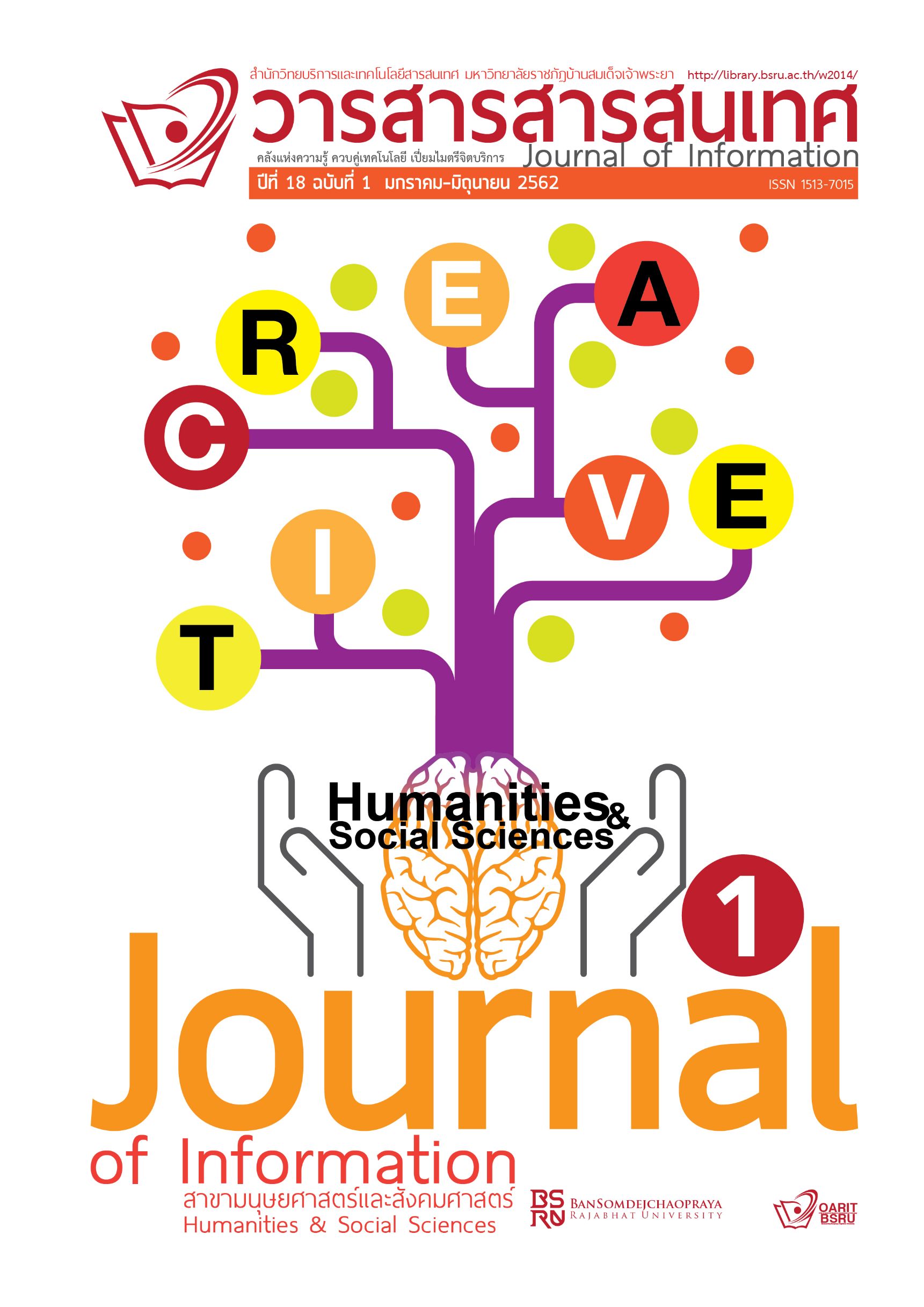The Knowledge Management for Traditional Thai Mural Paintings
Keywords:
Knowledge Management, Technology Management, Traditional Thai mural painting Wat KokAbstract
Abstract
The purpose of this research was to study the knowledge management process for traditional Thai mural paintings. The study deployed a qualitative research method, using Wat Kok church in Bangkok during performing traditional Thai mural paintings and conservation periods of September 2013 to November 2018 as a research field. Key informants were a professional traditional Thai mural painter – Chaowalit Nurnprom, a professional traditional Thai mural conservator – Sumonmal Nurnprom, and trainees; two persons on preparing wall surfaces and thirteen persons for traditional Thai mural paintings. Data collection techniques were direct observation, in – depth interview and field notes. Data analysis and interpretation, conclusion and verification had been done through induction principles. Findings were presented to an open public forum for verification and criticize by invitation experts and interested public.
The findings revealed that the knowledge management transfer of traditional Thai mural painting tacit knowledge from the professional traditional Thai mural painters and the professional conservators to explicit knowledge by externalization was a part of traditional Thai mural conservation in repainting on un-claimed surfaces which should be synchronized with the old traditional Thai mural paintings that presumably on the upper part surfaces written by mural painters in King Rama III period. The professional painter design objective figures, color, and lines according to traditional mural paintings of the first Ratanakosin period central region and painted the story of the ten incarnations of the Buddha on the wall among ten windows, the way of the life on the wall between the doors in front of the church, the Buddha enlightenment and great nuisance on the wall between the door sat the back of the church, the ways of life, houses and animals at the four corners and Chinese sacrifice on the wall behind every window and door. The other finding was that traditional Thai mural paintings consist of 10 processes; 1. Copying off the traditional Thai mural paintings from the wall, 2. Preparing the wall, 3. Preparing the wall surface basement, 4. Putting the copy painting in one back to the wall, 5. Performing special techniques for repeating figures and draw lines, 6. Painting the background, 7. Preparing colors, 8. Painting the main ones, 9. Gilding gold plates, and 10. Quality checking, evaluation and problem solving. It also found that there were 3 stages of technology management contributed in every steps regarding preparation and planning, executing (selection, modification, improving, and applying), and measurement, control, evaluation and development. The dialoguing has been done at the temple and the small buildings that used to prepare the mural paintings in reflective knowledge through face-to-face interaction between the professional traditional Thai mural painter and the professional traditional Thai mural conservator, trainees and researchers. Moreover, there were integration of new technologies with traditional practices for conserving unique traditional Thai mural paintings to be the Thai cultural heritages forever.
Downloads
Published
How to Cite
Issue
Section
License
บทความ ข้อความ ภาพประกอบ และตารางประกอบที่ลงพิมพ์ในวารสารเป็นความคิดเห็นส่วนตัวของผู้นิพนธ์ กองบรรณาธิการไม่จำเป็นต้องเห็นตามเสมอไป และไม่มีส่วนรับผิดชอบใดๆ ถือเป็นความรับผิดชอบของผู้นิพนธ์เพียงผู้เดียว






